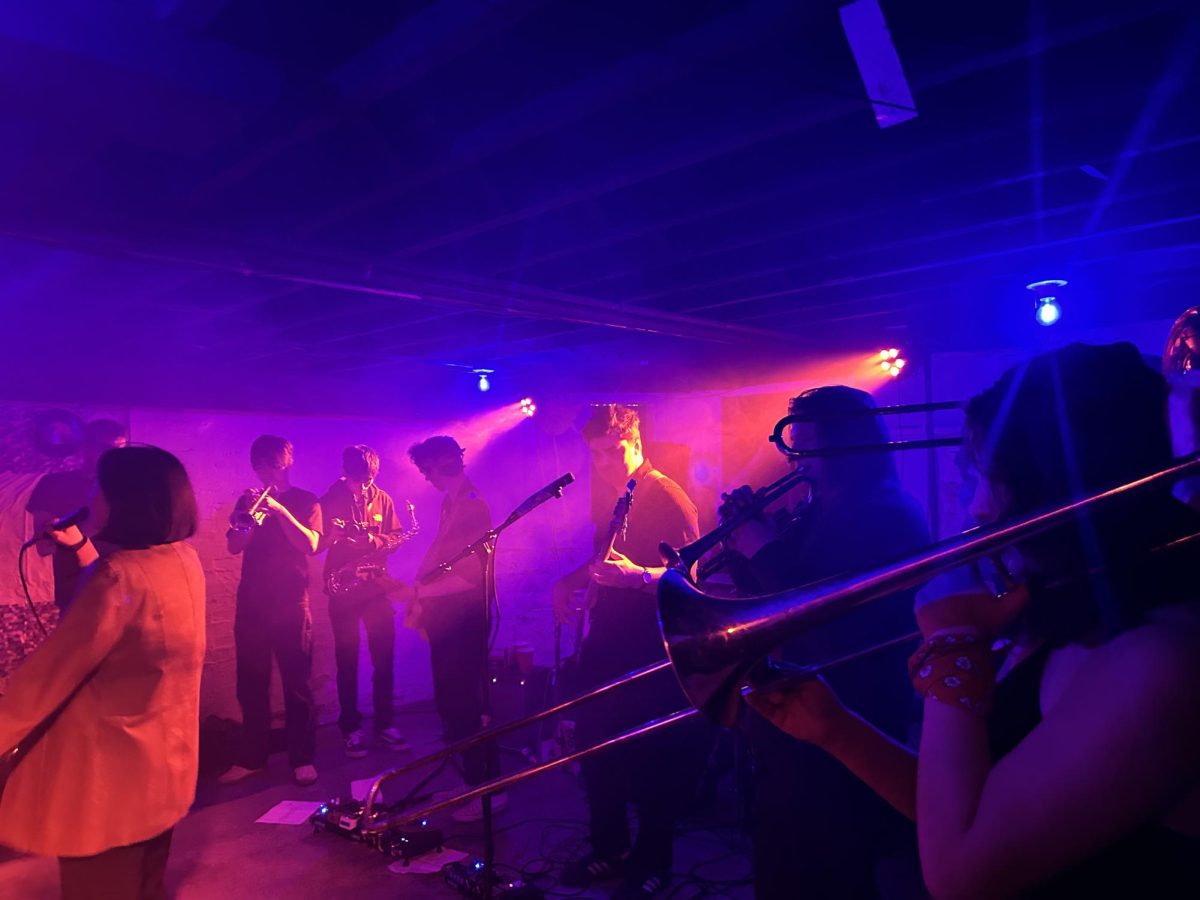Blunders, 18
irreparable, so easy to commit, 114
I first noticed several of the black inscriptions on the walls of the University during a prospective student weekend last spring. I read one while waiting in a long line descending the stairs of Social Sciences. The second was in Classics, on my way to find the café. I thought, knowing a little of the U of C’s penchant for the classics, perhaps these bits of text were supposed to be a modern take on the fragments of Heraclitus.
Returning to the campus as a student, I noticed a few more of these broken phrases followed by numbers as I hurried between studying, eating, and classes. When I began working for the Franke Institute this fall, my first assignment was to catalog the remaining inscriptions. I was told that facilities had painted over some of the inscriptions and no one was quite sure which ones remained.
In April 2006, during the final discussions of a conference titled “The Fate of Disciplines,” held in the final year of the three-year Mellon Project called “New Perspectives on the Disciplines: Comparative Studies in Higher Education,” the invited speakers pondered the relationship between the arts and the disciplines. Helen Mirra, professor of Visual and Environmental Studies at Harvard, presented her installation—which she calls “Instance the determination”—on the occasion of this event. The inscriptions that compose this project are from indexes that Mirra wrote for two books: John Dewey’s Experience and Nature and Jane Addams’s Newer Ideals of Peace. The fragments re-index these texts, and through her placement of them throughout the campus, they re-index the University and the disciplines housed within the buildings.
The title inscription “instance the determination, 14” was once located on the third floor of West Harper in a little-used hallway ramp leading across to Haskell. This inscription, along with all the others in Harper, has been erased, painted over with bright white paint. I asked several Harper library assistants about the inscriptions—if they had noticed their absence, or wondered what they were. One replied that the inscription located between the second and third floors of East Harper (“Confusion, as an intellectual tradition, 87”) was still there. She was sure. It was not, in fact, still there.
That I initially misread the project points to the highly interpretive nature of Mirra’s work. In Cobb I encountered a staff member who recalled first thinking that perhaps the inscriptions were graffiti, then deciding it was a scrambled message and attempting to find as many as he could to reconstruct this message. The construction of the Center for the Study of Languages removed a wall, which had been on the second floor of Cobb and held the inscription: “Contrast, meaningless; between perfect and defective Being, 137.”
Everyone I talked to while searching for the inscriptions had their own stories and interpretations of the project. Many thought, as I can only assume those facilities people did, that they were the work of students.
The nature of this installation made viewing the work as a whole almost impossible. I spent over three sweaty hours lugging my books and laptop up and down stairs with a printed location map to determine the status of each inscription.
As the hours went by I found myself unable to remember if I had seen a particular inscription. My own check-and-circle system seemed to fail me as I wondered if my own efforts (“…partial and unsatisfactory, 123”) would produce an accurate update to the list.
The erasure by the University of five of these text fragments doesn’t destroy the project, but it does remove elements of a viewer-created poetry. Perhaps it is the fate of art to be misrecognized, reinterpreted, and erased, but I encourage you to go experience this project before it is entirely removed (officially scheduled to happen in 2009).
An interactive map of “Instance the determination” can be found at instance.uchicago.edu.








